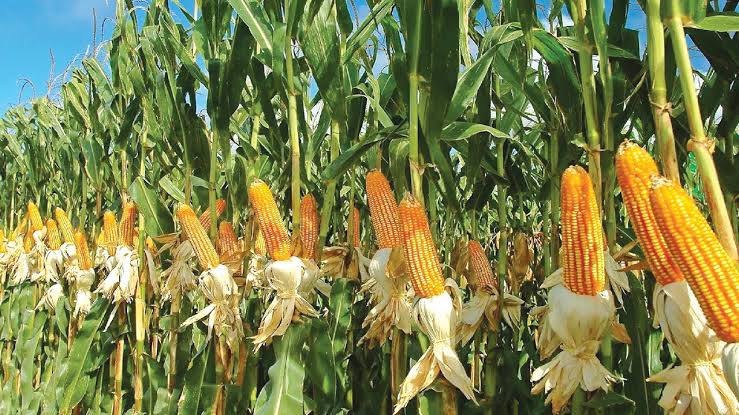The total landmass of corn fields in Nigeria shrank to the lowest in 14 years as insecurity and high input cost deter farmers from cultivating the crop.
According to data from the United States, Department of Agriculture, the area of corn fields under harvest in the 2024/2025 season stands at 5.1 million hectares- the lowest since the 2010/2011 agricultural season.
In Katsina State, the second largest corn-producing area in the country, corn yields in the second week of August reached their best levels since 2019, based on data from the Mantle Labs Crop Conditions Index, which employs satellite data and AI to evaluate crops.
Meanwhile, crop health in other regions has either remained stable or slightly declined.
Jon Pierre CEO of Mantle Labs told Bloomberg, “Nigeria has been steadily losing corn acreage to other crops and also due to challenges such as high input costs and insecurity in agricultural region,”
“However, corn production looks set to be on par with last year as a rebound in yields makes up for reduced planting”
The report noted that even if Nigeria’s corn output remains flat year-over-year, it would be a positive outcome, especially as several African countries are grappling with crop shortages following a drought that devastated harvests in Ghana and much of Southern Africa.
Improved corn yields in Nigeria could help alleviate malnutrition concerns and reduce the strain on food-driven inflation which reached 34% in June 2024, offering essential relief to authorities.
In response, the government has initiated measures to lower food costs, including a 180-day window for importing wheat and corn to help bring down prices in the open market.
Reason for food production shortage in Sub-Saharan Africa
However, such decline in corn production is not unique to Nigeria alone but spreads across major countries in Sub-Saharan Africa. The region will see almost 55 million people go hungry in 2024 with women and children most vulnerable.
Sub-Saharan Africa has a history of droughts that have caused significant damage in recent years. The region’s pronounced rainfall seasonality, coupled with the large number of people at risk and the vulnerability of their societies and economies, makes it especially prone to drought-related challenges that impact food production.
In response to this challenge, the United Nations’ World Food Programme is actively pursuing 290,000 tons of grain as part of its largest-ever drought relief effort in Southern Africa. Meanwhile, Ghana is aiming to raise $500 million to mitigate the effects of drought-induced grain shortages.

